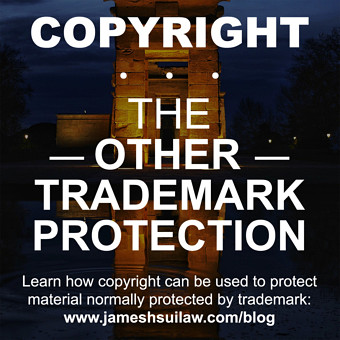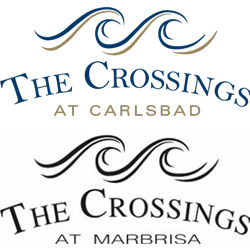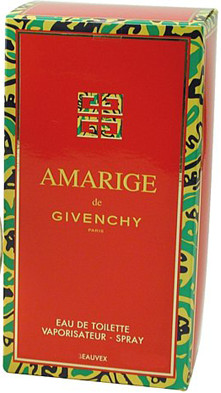
There is significant overlap between copyright and trademark protection. Some material, such as logos and packaging, can be protected both under trademark and copyright laws. This post will provide a couple of examples where copyright has been used for brand protection; describe the advantages of using copyright to protect your brand; and finally, describe the drawbacks of using copyright over trademark.
Examples of Using Copyright for Brand Protection
In City of Carlsbad v. Shah, 850 F.Supp.2d 1087 (S.D. Cal. 2012), the defendant, Shah, filed for an “intent to use” trademark registration of a logo that was identical to the logo of plaintiff’s golf course, “The Crossings at Carlsbad,” except “Carlsbad” was replaced by “Marbrisa.” Defendant also used that logo on his business cards. The court concluded that defendant infringed on plaintiff’s copyright in the logo, but ruled that because of untimely copyright registration, plaintiff was not entitled to statutory damages.

Top: Plaintiff’s logo.
Bottom: Defendant’s attempted trademark filing.
In Parfums Givenchy v. C & C Beauty Sales, 832 F. Supp. 1378 (C.D. Cal. 1993), Plaintiff, Givenchy USA, exclusive authorized dealer and subsidiary of Givenchy France, sued defendant for copyright infringement based on defendant’s importation of Givenchy Amarige Perfume into the U.S. without authorization from Givenchy USA (these are known as “grey market imports”). Amongst other defenses, defendant argued that the Givenchy Amarige Perfume box design was not copyrightable. The court concluded that the box design was copyrightable and that defendant infringed on plaintiff’s copyright under Section 602 (a) of the Copyright Act (which describes unauthorized importation as infringement).

The Givenchy Amarige Box
Advantages of Protecting your Brand through Copyright
Using copyright to protect your brand provides several advantages over trademark. Specifically, copyright has advantages in ease of registration, cost, industry scope and global reach.
Copyright registration is an easier process. Trademark protection, in the U.S., is earned through use. So, to properly register a logo as a trademark, for example, you would need to provide evidence of the logo being used with products in the class or classes you will be registering the mark under. Copyright protection is obtained upon creation of a copyrightable work. Thus, to register a logo for copyright purposes, you only need submit a copy of the logo. Unlike a trademark registration, there is no drawn out examination process for copyright registration.
The cost of registering a copyrighted work is as low as $35 per work, while the cost of registering a trademark is, at minimum, $225 per mark per class.
The trademark term “class” has a similar meaning to “industry,” so if you wanted full trademark protection for a logo used both for food products and electronic products, you would have to register in at least two classes, doubling the cost. This is because trademarks are industry specific and based on the idea of protecting the consumer from being confused as to the source of a product.
Copyright, on the other hand, is industry-blind and based on the idea of protecting the creativity of an author. The important question is whether or not something has been “copied.” Thus, for the purpose of brand protection, one copyright registration could be said to cover all industries.
Lastly, copyright has a much more global reach. Trademarks are territorial in nature. You must separately obtain trademark protection in every country you want protection in (although there are processes that make it easier). As discussed in the post, How do I get Copyright Protection?, due to the Berne Convention and the WTO, copyright protection is obtained in close to every country in the world, the moment it is published in a Berne Convention country.
Drawbacks of Using Copyright over Trademark
Copyright has two main disadvantages over trademark: copyrightability and expiration.
Firstly, the scope of material that can be copyrighted is much smaller than that which can be trademarked. Virtually anything can be trademarked, color (such as Tiffany Blue), a chime of three notes, slogans, words and symbols amongst others. To be copyrightable, a work must meet a minimum threshold of creativity. Words, colors, symbols and slogans generally do not meet the creativity standard; very simple logos can also fail to meet the standard and not be copyrightable.
Secondly, copyright protection expires after the statutory period. Once the period lapses, the copyrighted work falls into the public domain. A trademark, on the other hand, can continue on perpetually, so long as the trademark keeps being used.
Given the above, what type of intellectual property protection scheme should you use for your brand? Trademark and copyright are not exclusive choices, and many companies utilize both when available. Doing so would provide the widest protection for your brand. However, it is good to know that copyright can provide a quicker, less expensive and more easily obtainable avenue of protection in many circumstances.
This blog post is provided for general informational purposes only. It is not legal advice, and should not be a substitute for legal advice. If you have questions or comments about the post, or would like to learn more about something in the post, please feel free to contact me.

No thoughts on "Protecting Your Brand through Copyright."